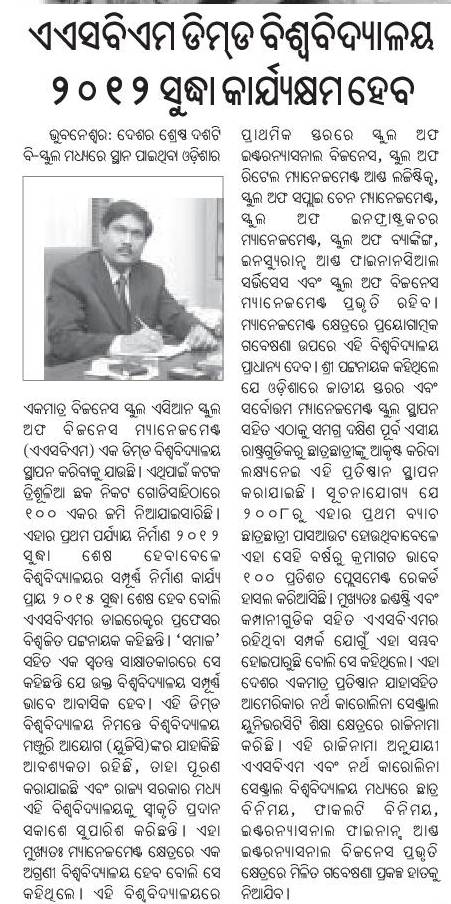Status of deemed university applicants as of 31st March 2009
The following is from http://www.ugc.ac.in/notices/pendingprosaldawis160409.pdf.
| Name | Date proposal received | Status |
| Krupajal Engineering College, Pubasasan, Kausalya Ganga, Bhubaneshwar – 2, Orissa. De-novo |
F. 9-17/2007- U.3 (A) dated 15.3. 2007 withdrawn. Fresh proposal received under De-Novo No. F.9-27/2008 dt. 15.4.08 |
Expert Committee constituted. UGC No. 35-1/2007 (CPP-I). |
| College of Engineering Bhubaneswar, Under Nabadigant Educational Trust,Plot No. 1, Sector – 3, Chandaka Nucleus Industrial Complex, Patia, Bhubaneswar – 751 024, Orissa. De-novo |
F.9-30/2007-U.3 (A) dated 15th May, 2007 |
The Institute has been asked to comply with the deficiencies vide UGC Letter No. F. 35-3/2007 (CPP-I) dated 27th August, 2007 |
| Asian School of Business Management Bhubaneswar, Orissa. De-novo |
F.9-45/2007-U.3 (A) dated 18th September, 2007 |
The Institute has complied with the deficiencies are under consideration. UGC Letter No. F. 35- 5/2007 (CPP-I) |
| Vidya Bharti University, Gunupur Distt. Rayagada, Orissa |
F.9-60/2007- U.3(A) dated 28.11.2007 |
Letter to the State Government has issued for NOC. UGC NO. F.35-6/2007 (CPP-I) dt. 25.3.2009. |
| Koustav Institute of Self Domain Patia, Bhubaneswar, Orissa. De-novo |
F. 9-68/2007- U.3(A) dated 9th January, 2008 |
Information has been called in checklist proforma vide UGC Letter F. 35-1/2008 (CPP-I) dt. 4.2.2008. |
| HI-TECH University Plot No. A-170, Saheed Nagar, Bhubaneswar, Orissa. |
F. 9-4/2008- U.3(A) dated 15th January, 2008 |
Information has been called in checklist proforma vide UGC Letter F. 35-2/2008 (CPP-I) dt. 6.2.2008. |
| C.V. Raman University Bhubaneswar, Orissa. |
F. 9-67/2007- U.3(A) dated 9th January, 2008 |
The Institute has been asked to comply with the deficiencies vide UGC letter No. F. 35-4/2008 (CPP-I) dt. 12.3.09 |
| Orissa Institute of Technology P.O.-Burla, Distt-Sambalpur – 758018 Orissa |
F. 9-41/2008- U.3(A) dated 9th July, 2008 |
The Institute has been asked to comply with the deficiencies vide UGC letter No.F.35-5/2008 (CPP-I) dt. 2.3.2009. |
| Kalinga Institute of Social Sciences, Ai/PO-KIIT, Bhubaneswar-751024 De novo |
No.F.9-1/2008- U3(A) dated 27th January, 2009 |
The Institute has been
|
Among the above, Orissa Institute of Technology, has already been declared a state university with the new name VSSUT.
4 comments May 9th, 2009
